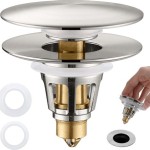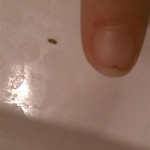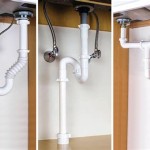How to Assemble a Bathroom Sink: A Step-by-Step Guide
Assembling a bathroom sink can seem like a daunting task, but with the right tools, preparation, and a methodical approach, it is a manageable DIY project. This article provides a comprehensive guide to assembling a typical bathroom sink, covering everything from preparing the workspace to connecting the plumbing.
Before embarking on this project, it is imperative to gather all necessary tools and materials. These typically include:
- Adjustable wrench
- Basin wrench (also known as a sink wrench)
- Pliers
- Screwdrivers (Phillips and flathead)
- Putty knife
- Plumber's putty
- Teflon tape
- Level
- Safety glasses
- Gloves
- Clean rags
- New faucet (if replacing)
- New drain assembly (if replacing)
- Supply lines (if replacing)
- P-trap
Having everything within easy reach will streamline the process and minimize interruptions.
Key Point 1: Preparing the Sink and Workspace
The first step involves clearing the workspace and inspecting the new sink and its components. Carefully remove the sink from its packaging and place it on a padded surface to prevent scratches or damage. Thoroughly examine the sink for any defects or imperfections. Verify that all necessary parts are included, comparing them against the manufacturer's parts list. Ensure the countertop or vanity is clean and free of debris. Covering the surrounding area with a drop cloth will protect the floor from spills or tool drops. Turn off the water supply to the existing sink at the shut-off valves located beneath the sink. If shut-off valves are not present or are malfunctioning, turn off the main water supply to the house.
After shutting off the water supply, disconnect the existing plumbing. Place a bucket underneath the P-trap to catch any residual water. Use an adjustable wrench or basin wrench to loosen the connections to the P-trap and supply lines. Carefully remove the existing faucet, drain assembly, and P-trap. Clean the countertop surface to remove any old sealant or debris. Ensure the surface is level to provide a stable base for the new sink.
With the old sink removed and the area prepped, the new sink installation can begin. This typically involves installing the faucet and drain assembly into the sink before placing it on the countertop.
Key Point 2: Installing the Faucet and Drain Assembly
Prior to installing the sink into the countertop, it is often easier to install the faucet and drain assembly. Begin by referring to the manufacturer's instructions for the specific faucet model. Most faucets come with detailed diagrams and instructions. Apply plumber's putty to the underside of the faucet base where it will contact the sink. This creates a watertight seal. Insert the faucet into the designated holes in the sink.
From beneath the sink, attach the mounting hardware provided with the faucet. This usually involves tightening nuts and washers onto the faucet shanks. Use a basin wrench to access the tight spaces and ensure the nuts are snug but not overtightened. Overtightening can damage the sink or faucet. Connect the supply lines to the faucet shanks, tightening the connections with an adjustable wrench. Ensure the connections are secure to prevent leaks.
Next, install the drain assembly. Apply a bead of plumber's putty to the underside of the drain flange. Insert the drain flange into the drain opening in the sink. From beneath the sink, attach the rubber washer, cardboard washer, and mounting nut onto the drain tailpiece. Tighten the mounting nut securely by hand, then use pliers or an adjustable wrench for a final tightening. Remove any excess plumber's putty with a putty knife, creating a clean and professional finish. Connect the tailpiece extension (if used) to the drain tailpiece, ensuring a tight connection. The pop-up drain mechanism can be installed at this point, following the manufacturer's instructions.
With the faucet and drain assembly installed, the sink is ready to be placed onto the countertop or vanity.
Key Point 3: Mounting the Sink and Connecting the Plumbing
Carefully lower the sink into the countertop opening. Ensure it is properly aligned and centered. If the sink is a drop-in model, it should rest securely on the countertop. If the sink is an undermount model, it will need to be attached to the countertop using clips or adhesive. Follow the manufacturer's instructions for the specific mounting method. Ensure the sink is level using a level. If necessary, use shims to adjust the levelness. Secure the sink to the countertop according to the manufacturer's instructions. This may involve tightening screws or applying adhesive.
Once the sink is securely mounted, connect the plumbing. Attach the P-trap to the drain tailpiece. Ensure the connections are tight and leak-proof. Connect the supply lines to the shut-off valves, wrapping Teflon tape around the threads of the valve nipples before tightening. This will help prevent leaks. Slowly turn on the water supply and check for leaks at all connections. If leaks are detected, tighten the connections further or reapply Teflon tape. Operate the faucet and drain to ensure they are functioning properly. Check for leaks around the faucet base and drain flange.
After verifying that all connections are secure and leak-free, clean up the work area and dispose of any waste materials properly. Inspect all completed connections one last time to ensure there are no drips or signs of leaks. Observe the plumbing for at least 24 hours to confirm the integrity of the connections. If any leaks develop, promptly address them by tightening the connections or replacing any faulty components.
Proper disposal of old plumbing components is essential. Check local regulations for guidelines on disposing of old pipes, faucets, and other plumbing materials. Some materials may be recyclable.
Regular maintenance is crucial for extending the lifespan of the newly installed sink and plumbing. Periodically inspect the connections for leaks and tighten as needed. Clean the sink regularly with appropriate cleaning products to prevent buildup and maintain its appearance. Avoid using abrasive cleaners that can scratch the surface of the sink. Periodically check the drain for clogs and clear them as needed. A mixture of baking soda and vinegar can often be used to dissolve minor clogs. Consider installing a hair strainer in the drain to prevent hair and debris from entering the plumbing system.
When working with plumbing, safety should always be a top priority. Always wear safety glasses to protect your eyes from debris. Wear gloves to protect your hands from chemicals and sharp edges. If you are unsure about any part of the installation process, consult a qualified plumber. Incorrectly installed plumbing can lead to leaks, water damage, and other problems.
By following these detailed steps and taking necessary precautions, one can successfully assemble and install a bathroom sink, enhancing the functionality and aesthetics of the bathroom.

How To Install A Bathroom Vanity

How To Install A Bathroom Vanity And Sink

How To Install Bathroom Faucet Plumbing With Randy From R Squared Renovations

How To Install Or Remove A Bathroom Vanity Homeserve Usa

Step By Tutorial How To Install A New Bathroom Sink Faucet Maggie Mcgaugh

How To Replace And Install A Bathroom Sink

12 Easy Steps To Install Bathroom Vanity And Sink
How To Install Bathroom Sink Drain Queen Bee Of Honey Dos


How To Install A Pedestal Sink Elevate Your Bathroom







